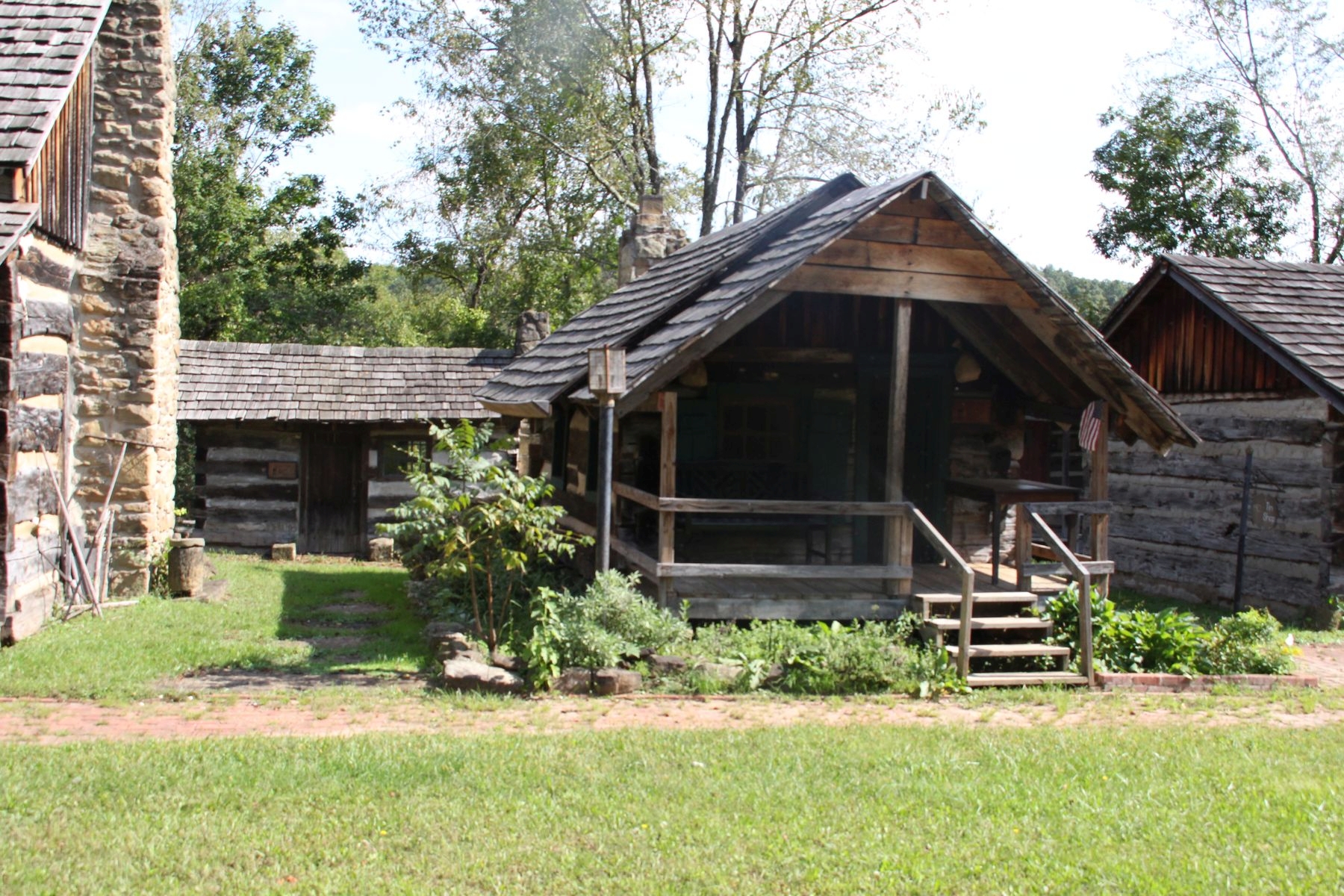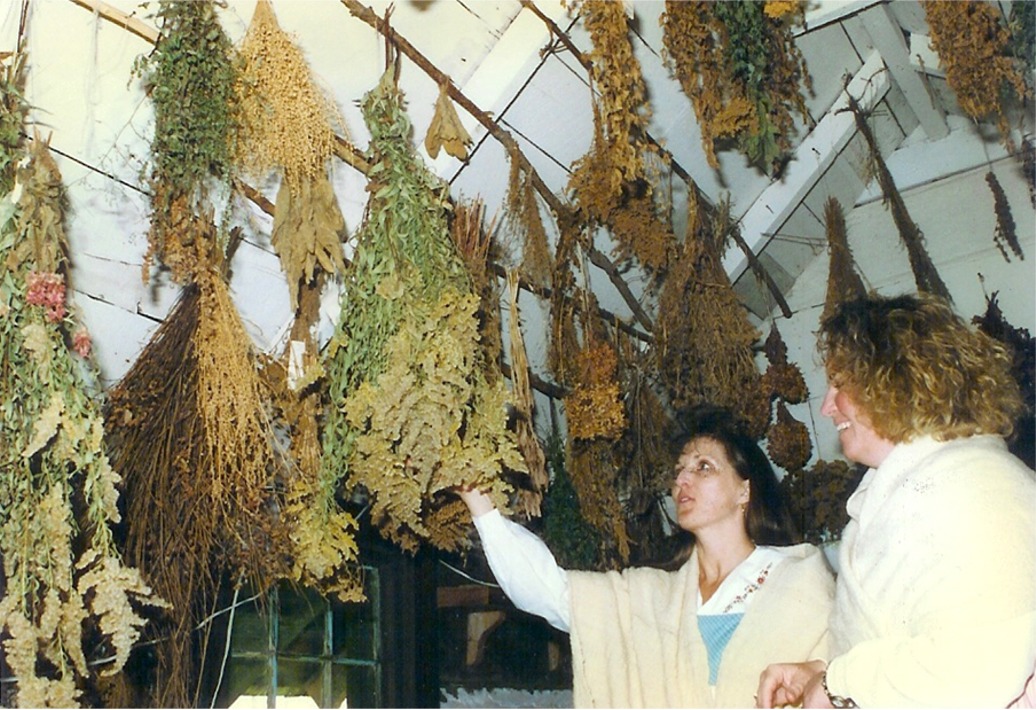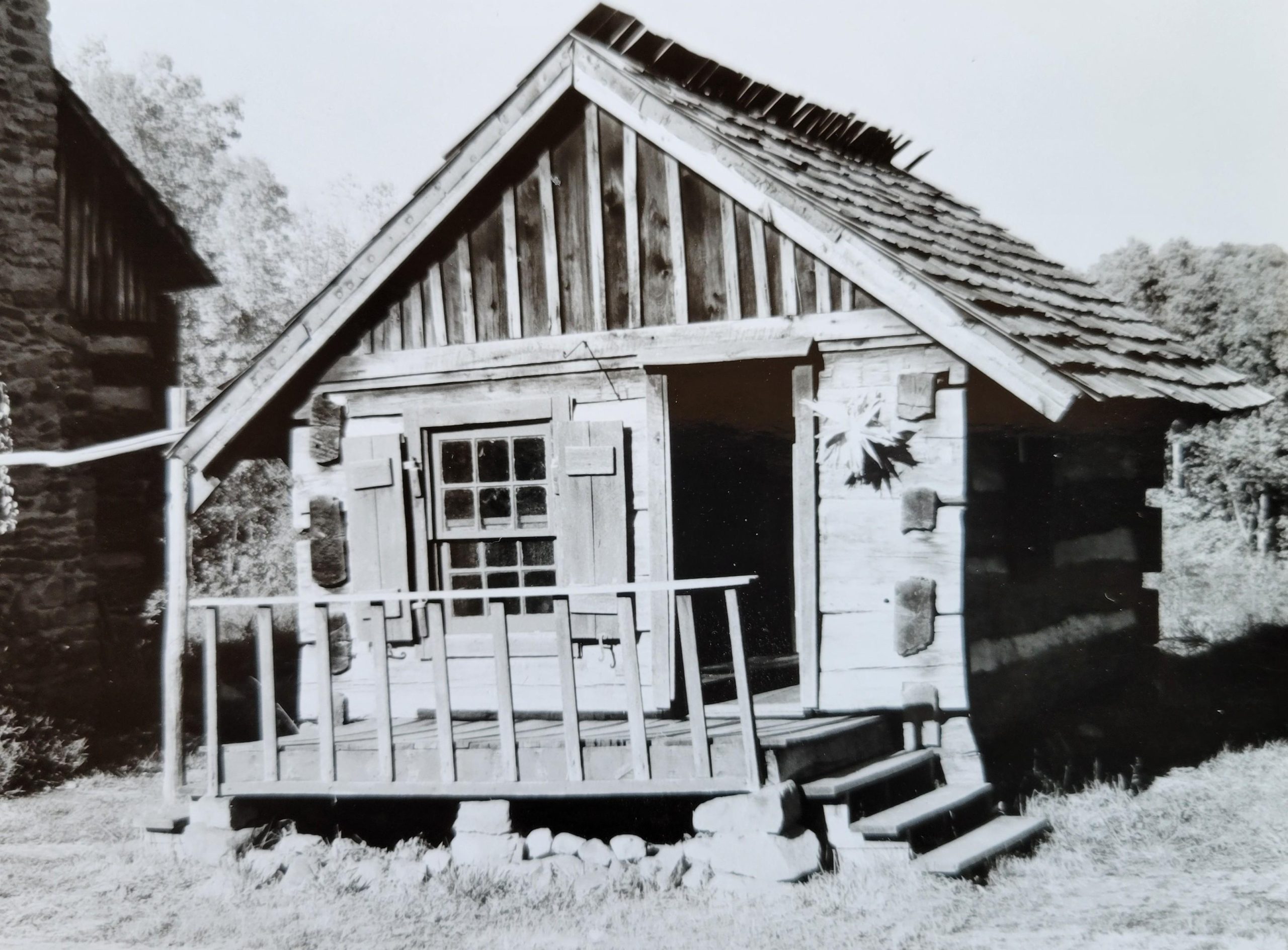APOTHECARY
Name of Structure: The Apothecary
Original Location: Patterson Road – Harrison County
Donated By: The Francis Williams Family
Original Sponsor: Dr. Burl and Mary Randolph
Additional Sponsors: Enterprise Foundation
The Apothecary Shop was reconstructed from a remnant log house that was renotched to create this particular building. The deed books trace this piece of property to 1838. The house in its original state was very unusual because the top part of the house was a v-saddlenotch and the bottom part of the house was dovetailed. The donors wanted to keep part of the house, so when it was reconstructed at the Fort, the logs were renotched. It is doubtful that a building specifically for this type of herbal science would have been part of the settlement. However, the function carried on at present would have been prevalent throughout the area homes. The Apothecary at Fort New Salem was restored and re-opened in 2010.
The apothecary was the local pharmacist. Very often the community just had a “yarb” woman who was well versed in the medicinal qualities of the local plants and tended to the people in the settlement.
Plants were gathered throughout their growing season and then dried for future use. A “yarb” woman would devote a great deal of time just stocking her store for the many months to come. The Apothecary Shop reflects the long hours of gathering with its many plants displayed for all visitors to see. The aroma from the plants can be very pleasing and enticing. Medicinal uses varied. “Prescription” plants and herbs were given in tea, applied as a poultice, steeped in an alcohol base or made into a syrup. Many different parts of the plants were saved, such as leaves, roots, bark and flowers, with very little wasted. The gatherer also knew how to collect a plant so that it could continue to replenish itself and the source not be destroyed.
The plants gathered had a variety of uses. Wild cherry bark was used for a cough. White willow bark is the natural form of aspirin. Yellow root was used for sore throats and other ailments and is the natural form of our antibiotic Erythromycin. Plants for dyes were also collected from sumac, yarrow, walnut, various grasses and poke berries.
It is not advisable for a novice to gather and experiment with natural cures, as many plants are toxic to the system and difficult to recognize.
The content of this page was developed by information provided to and written by David Huffman, 2023 Intern Fairmont State University.




